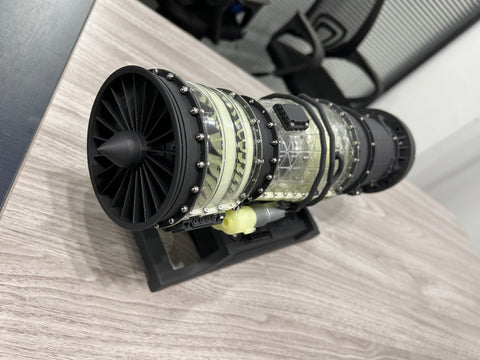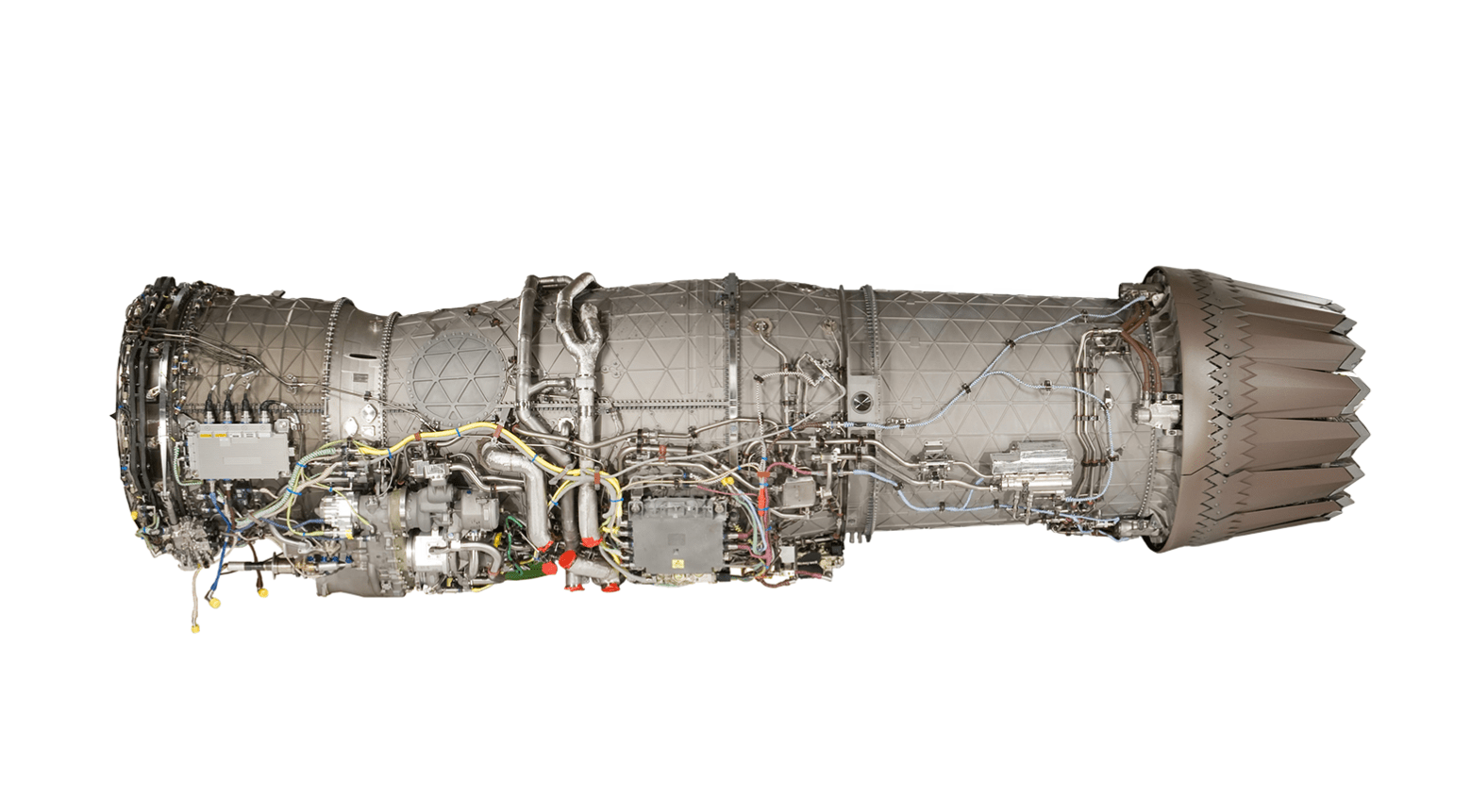
The greater the bypass ratio, the more fuel-efficient? What is the difference between a turbofan and a turbojet engine? | TECHING & EngineDIY
TECHING F135 Engine Metal DIY Mini Turbojet Engine Model - Enginediy


The so-called turbofan engine is a turbofan engine, also known as an internal and external ducted jet engine. This is an aerospace engine that uses gas to drive a turbine. Its main feature is obvious. The area of its first-stage fan blade is very large, larger than that of the turbine. Jet engines abound.

In the engine, the passage of the turbine engine through which the air passes is called the inner duct, and the outer part through which the turbine drives the first-stage supercharging fan blades to push the air through is called the outer duct. Obviously, adding more fan blades and supercharging can obtain the benefits of propellers and compressed air at the same time, allowing part of the inhaled air to flow directly through the outer duct around the engine to increase thrust. Under the simultaneous action of the internal and external ducts, the effect produced is equivalent to the dual thrust of a turboprop and a turbojet propulsion engine.
To understand the specific advantages of turbofan engines, we must first talk about turboprop engines and turbojet engines.
To understand the specific advantages of turbofan engines, we must first talk about turboprop engines and turbojet engines.

The principle of a turboprop engine is roughly similar to a traditional engine powered by a piston engine. It relies on the rotation of the propeller to drive the air flow to obtain the forward propulsion of the aircraft. Generally speaking, they are similar. The main difference lies in the power source that drives the central axis of the propeller. The gas turbine of a turboprop engine usually runs at a constant speed, while the piston-powered propeller will have different speeds according to the engine speed. Variety

The turbojet engine seems to be easier to understand. It completely uses high-temperature and high-pressure gas airflow to generate thrust. Although it has high working efficiency and fast flight speed, its fuel consumption is very high and its economy is not very good. Turbojet engines are suitable for a wide range of navigation, ranging from low-altitude and low-subsonic speeds to high-altitude supersonic aircraft. The former Soviet Union's fighter MiG-25 high-altitude supersonic fighter was powered by the Mikulin-Tumansk Design Bureau's turbojet engine. It once set a fighter speed record of Mach 3.3 and a service ceiling record of 37,250 meters.

Back to the topic, the turbofan engine that combines the two technical ideas looks very large in appearance, but in fact only the middle part is propelled by jet, while the other positions are propelled by fan. This way of power distribution, the unit The fuel consumption rate per hour of thrust is better than that of a pure turbojet, and it also flies faster than a pure turboprop.
However, when the turbofan engine flies at hypersonic speeds, it is affected by the boundary layer, resulting in poor thrust and weight at low pressures at high altitudes and at supersonic speeds. As a result, turbofan engines are most suitable for use when the flight speed is 400 to 2,000 kilometers per hour (that is, medium and low speeds to supersonic speeds of Mach 1.6). Therefore, most jet engines now use turbofan engines as their power source, which is faster The model is not suitable for using a turbofan engine. Instead, a powerful turbojet engine should be selected.

The bypass ratio of a turbofan engine is the ratio of the mass of air that does not pass through the combustion chamber to the mass of air that passes through the combustion chamber per unit time. The smaller the bypass ratio, the more the aircraft relies on jet propulsion. The larger the bypass ratio, the more the aircraft needs to rely on the airflow passing through the outer bypass to fly. A turbofan engine with a zero bypass ratio is a turbojet engine. Early turbofan engines and the turbofan engines used in modern fighter jets have low bypass ratios. However, in order to save fuel, most modern civil aviation aircraft have higher engine bypass ratios. It's bigger, usually above 5, which is almost the same as flying with a propeller. A turbofan engine with a high bypass ratio consumes less fuel, but has the same thrust as a turbojet engine, and is much quieter in operation, making it more suitable for civil aircraft.

If you want to increase the flight speed, civil aviation passenger aircraft need to be replaced with aircraft with smaller bypass ratios, increasing fuel consumption and jet volume to obtain better propulsion effects, and the corresponding consequences are greater fuel consumption and louder noise, such as Concorde, a former supersonic passenger aircraft, can be said to fly almost entirely using jets, but its operating costs are too high and it has long since been grounded.
In any case, turbofan engines with different bypass ratios have their own advantages and disadvantages, but it cannot be denied that the turbofan engine is definitely the essence of the human aviation industry.



would you buy it

Leave a comment